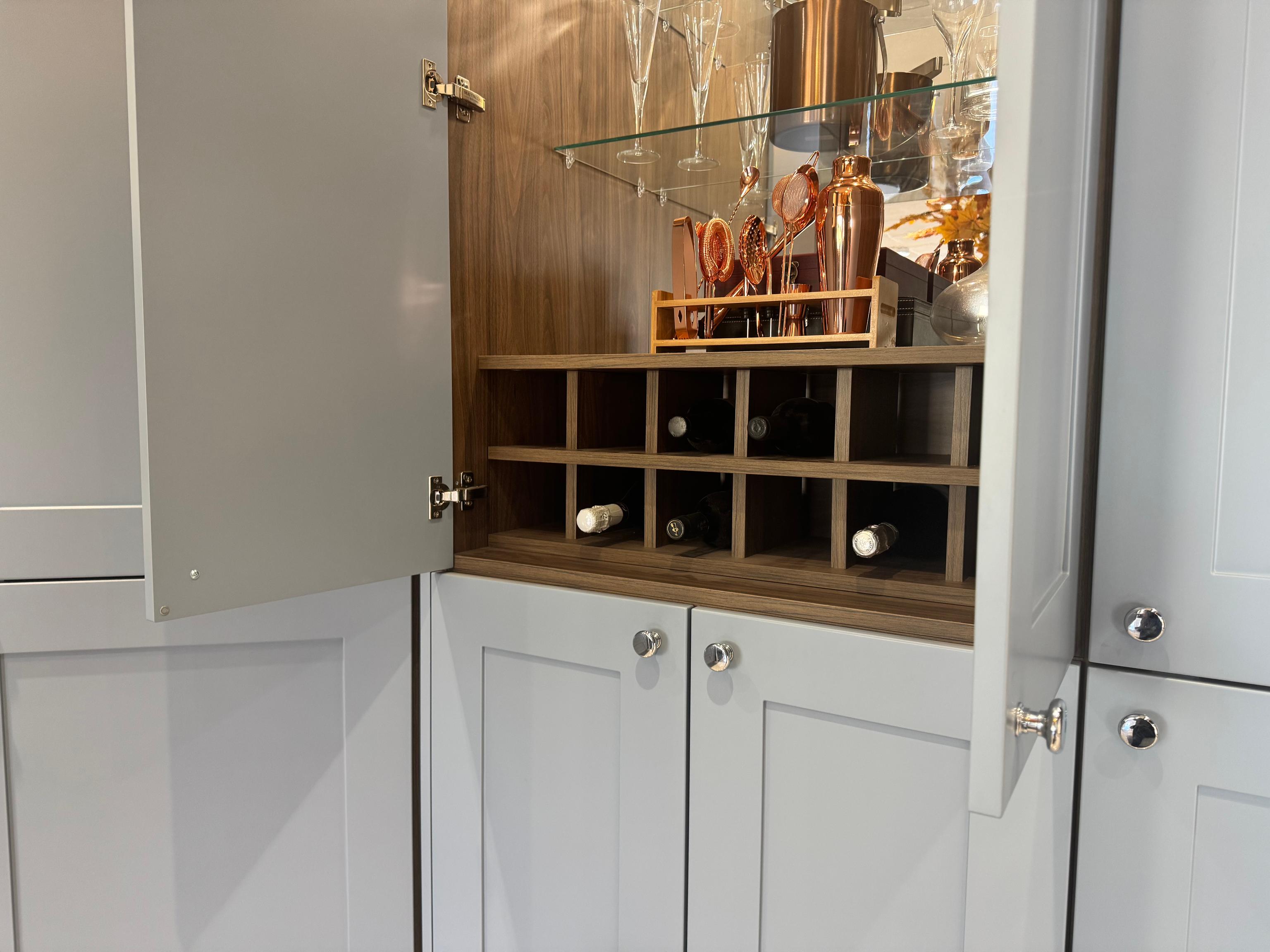Kitchen Cabinet Design Thoughts
Good cabinet design balances form and function. Here's how to get it right.

Layout & Workflow
- Match the finish of hardware to other metal fixtures in the kitchen (taps, lighting, appliances).
- Prioritise ergonomics — cup pulls or long bar pulls are easier to grip for drawers.
- Use matching flooring throughout the space to create visual flow.
Modern cabinet accessories are game-changers: pull-out pantries, tilt-out trays, built-in spice racks, vertical dividers, and drawer organizers turn wasted space into useful storage.
Smart Storage Solutions
Design storage for how you actually live. A few ideas:
- Corner solutions: lazy Susans or pull-out corner systems make corners usable.
- Deep drawers: replace lower cabinets with drawers for easier access to heavy items.
- Appliance garages: keep small appliances hidden but accessible.
- Open shelving: good for frequently used items but requires tidiness.
Budgeting & Priorities
Cabinets are one of the biggest costs in a kitchen remodel. To get the most value:
- Decide your top priorities (durability, style, storage) and allocate budget accordingly.
- Invest in quality cabinet boxes and hardware; you can save visually by choosing less expensive door styles if necessary.
- Consider semi-custom cabinetry for better fit and features if full custom is out of range.
Small urban kitchen: Maximise vertical storage, use full-height cabinets, and prioritize pull-out organizers for access.
Family kitchen: Durable finish, plenty of deep drawers, and an organized drawer system for cutlery and school lunch prep.
Conclusion
Great cabinet design serves a purpose: it reflects how you use the kitchen, the style you love, and the lifespan you expect. Spend time planning layout and storage, choose reliable materials for daily use, and pick finishes and hardware that make the space feel like yours.
Ready to start your cabinet project? Sketch your preferred layout, list the items you store, and prioritise the features that will make everyday life easier.